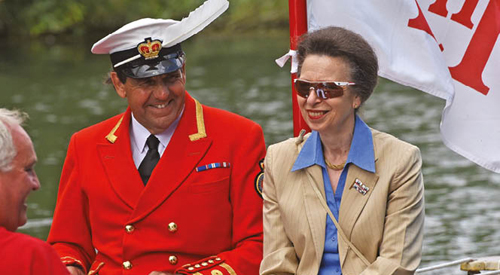Keeping up with the swans

THERE were more than 1,300 swans on the Henley to London stretch of the Thames in the mid-Sixties. By 1985 that number had fallen to just seven breeding pairs.
The chief culprit was poisoning from the still legal use of lead in fishing tackle. Today you could add in oil pollution from illegal boat discharges, youths armed with air rifles, even dog attacks.
It’s a hard life being a swan. And then we’re told not to feed them bread – even though they may be starving when the natural vegetation they rely on in winter is in short supply.
(For future reference: bread is fine, especially when food is scarce and swans will just swim away when they’ve had enough.)
Numbers are now better since that Eighties nadir which must be heartening for their owner, none other than Her Majesty The Queen.
Mute swans on the river – the others are just visiting – belong historically to the monarch in her role as Seigneur of the Swans, a title dating back centuries when swans, and especially cygnets, were eaten as a delicacy.
We may no longer consume them but one way or another humans have given swans a hard time. So who you gonna call? Swan Uppers!
Every July David Barber dons his bright red jacket to turn into a veritable swan superhero, the Queen’s swan marker. At the head of a flotilla of six boats bearing the distinctive royal cypher, David will lead his team in the traditional act of swan upping, when swans are collected – or upped – in order to monitor the health and status of the Thames’s swan population.
Data collected each year includes details of where a brood is caught, how many cygnets there are per brood, plus their weight and size.
The birds are checked for injury or disease and each cygnet will have a small British Trust for Ornithology ring placed on one leg to identify it and provide future traceability.
The journey between Sunbury and Abingdon takes the 19-man team five days and provides enough information to calculate whether things are going swimmingly for swans in other parts of the UK.
David, who was born in Marlow and now lives in Henley, says he has his riverside childhood to thank for the job he was proud to be appointed to almost 30 years ago.
“My parents would take me down to the river as a very young child to feed the ducks and swans and I’m sure that is when my interest in the river and wildlife began,” he says.
“When I left school I took an apprenticeship at Andrews Boathouses in Bourne End as a marine engineer.
“Andrews designed and built the slipper stern launches that were extremely popular on the Thames and still are today.
“The boathouses are no longer trading and the site has been developed for housing, like so many former boatyards on the Thames.
“I started my own marine engineering business and purchased Turks of Cookham. At the time, Mr Turk was the Queen’s swan keeper and as I was interested in swans, I used to help him on swan rescues and with removing swans for Henley Royal Regatta.
“When Mr Turk retired, my name was put forward for the new position of the Queen’s swan marker, along with many other applicants.
“I was keen to transform the position into a more conservation-focused role and to facilitate the education of young children about swan upping, the river and the wildlife that lives on it.”
David’s team includes representatives of the Vintners and the Dyers livery companies, which have also owned swans on the Thames since the 15th century.
They are accompanied by an Oxford University zoology professor and the charity Swan Support.
Inevitably for David, it is distressing to see distressed birds but he points out there are three rescue organisations on the Thames which are dedicated to looking after sick and injured birds.
“Pollution has increased over the years, mainly from engine and diesel oil discharged into the river illegally,” he says.
“This causes horrendous difficulties for the rescue organisations as invariably it is not just one swan that is oiled but dozens of them at the same time and each swan has to be caught, cleaned and washed.
“The environment agency is fully aware of the problem but it is often extremely difficult to identify and prosecute those responsible.
“There has also been a very disappointing and shocking increase in shooting incidents, usually involving air rifles.
“It is usually youths that are the offenders but, as with pollution, it is very rarely that the perpetrators are caught and brought to justice.”




.jpg)